Into Darien Gap: Migrants gather tips, team up in Colombia for treacherous trek to U.S.
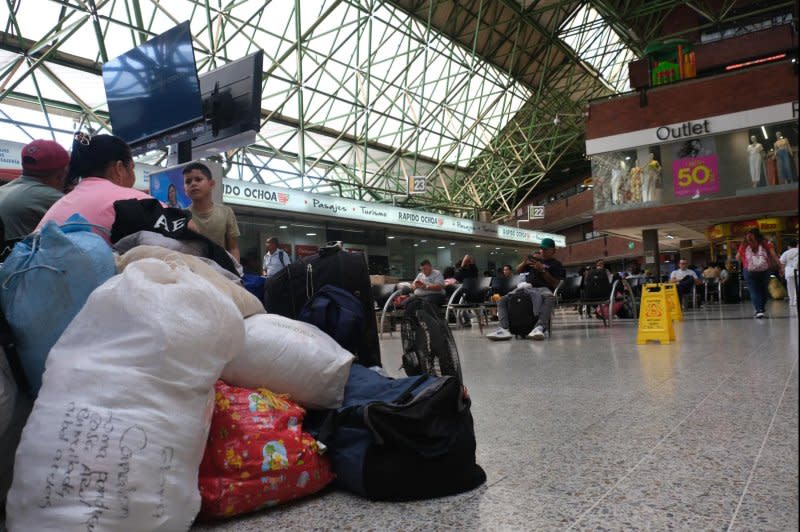
MEDELLIN, Colombia, Oct. 26 (UPI) -- By the time Angel Munoz's bus pulled into Medellin, Colombia's north station on Saturday morning, he was beginning his fifth day on the road -- sleeping only in the fabric bus seats, or when he got a moment to rest in a terminal before the next one departed.
He'd come all the way from Peru, where he says he lived "day by day," working 12-hour shifts installing drywall or wiring electricity for about $10 in pay.
Munoz, who is from Venezuela, left behind his kids and their mother this month in order to attempt the trek through the Darien Gap -- the hazardous stretch of jungle between Colombia and Panama -- in hopes of reaching the United States to work and send back money to the family.
"This is the route that there is right now, no?" he told UPI. "Because legally nothing can be done."
Faced with limited legal pathways to the United States and grueling economic situations at home, Munoz is one of hundreds of thousands who have decided to make the trek this year. More than 400,000 had begun the journey as of Oct. 1, according to Panama's government, a record.
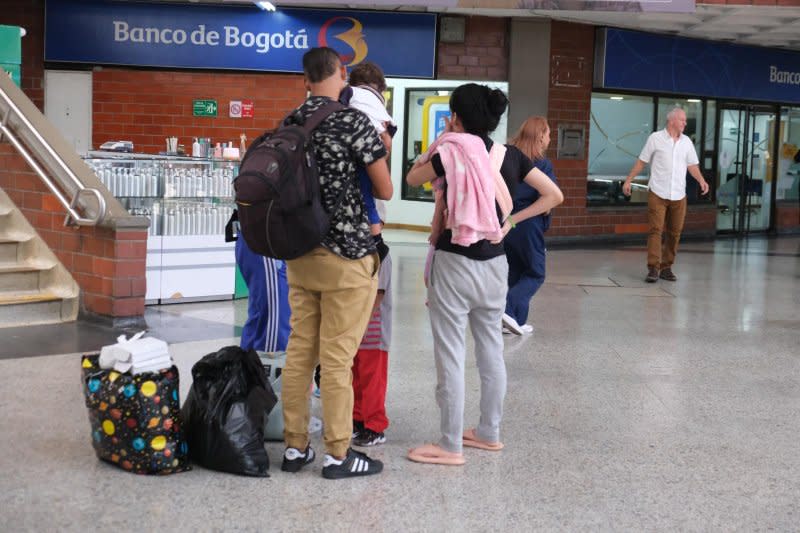
There's a fellowship in the historic flow of people heading north; people plan their journeys by discussing the details through apps like TikTok and Facebook, where an active group of more than 500,000 shares video and photos from the muddy jungle, or lists prices for each leg of the journey.
"I want to know with how much [money] I should travel from Ecuador to the United States," one recent poster inquired.
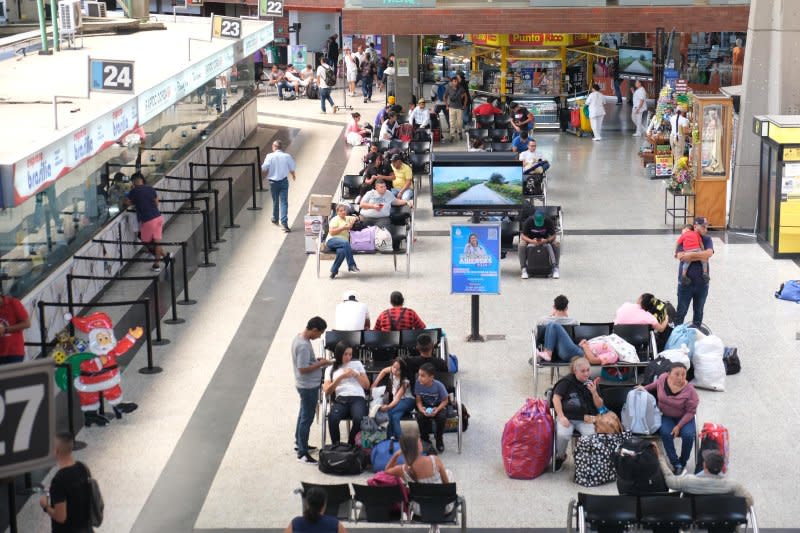
"We are in Costa Rica, I'm traveling only with my daughter," another man offered. "Any information you need ... here I am, according to my experience."
But first, they must pass through Colombia, often spending dozens of hours on buses -- or on foot -- to get to Turbo or Necocli, the northwest cities that have become the most common starting points for the journey, which begins by boat.
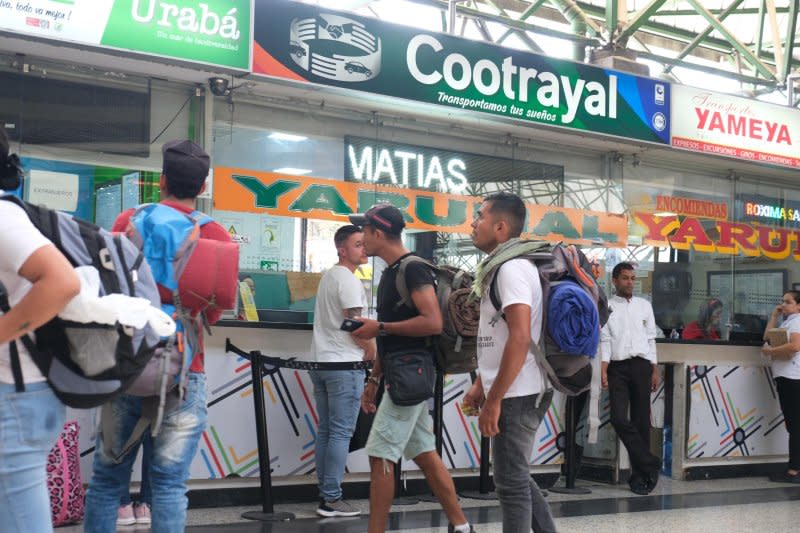
That's why key through points in central Colombia, especially Medellin, have been forced to adapt to the increased flow.
In August -- a high point of migration this year -- the city's north bus terminal saw an average of 1,100 people traveling toward the Darien Gap daily, according to R4V, the interagency platform tracking data on refugees and migrants from Venezuela. Buses leave regularly for the 10-hour ride to the coast.
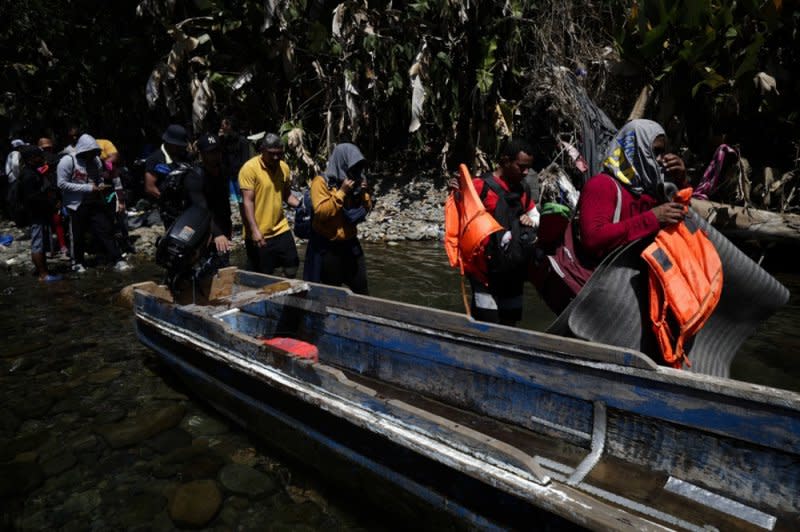
That's even more than last year, when an estimated 70% of people who passed through the Darien Gap first passed through Medellin, Samir Echeverri, executive director of the Association of Passenger Transport, said.
"In 2021, all these migratory flows started," Echeverri said. "For us, it was very strange to see that number of people. From there, the transportation companies began to execute a different transportation process."
They expanded. Three bus companies now operate hourly trips to the northwest, with a total of 1,680 seats available per day. Echeverri said they are usually full.
He noted that each traveler is legally required to show a document verifying their identity to buy a ticket, which is how they track who is likely migrating.
Some migrants link up and form groups in Medellin, while many others create travel groups via WhatsApp chat, planning to meet at the start of the trek in Necocli.
"It's much better as a group," said Libardo, who along with his wife, Laura, were organizing a group that will leave on Oct. 30. The couple, who is from Sincelejo, Colombia, asked that their last name not be used to protect their safety.
"There are many good people, but also bad people, because it's a jungle," Laura said, recounting stories about people being robbed or left behind by a guide they paid at the start of the hike.
"They recommend that we go as a group, that we don't separate."
They also hope it will make the trip more economical, as they're bringing along their 7-year-old daughter. It costs about $350 just to enter the jungle -- paid to self-appointed guides who control the entrance -- but they would like to negotiate a cheaper collective rate.
Libardo and Laura expect as many as 50 to travel in their group. They say they struggle with money daily -- Libardo works as a motorcycle taxi drive, and Laura as a nurse, but she said she lacks money for the additional training she needs to advance.
"That's the dream of everyone, your American dream," Libardo said. "It's just to better one's situation ... Because here in the origin country where we are, the situation is very hard."
Panama and Costa Rica have asked Colombia's government to do more to moderate the flow of people going through the Darien Gap. But Colombian President Gustavo Petro has refused to cut off the route. He has instead called for an end to sanctions on Venezuela, the native country of the majority of people crossing the jungle this year.
U.S. President Joe Biden's administration has also expanded legal migration pathways for Venezuelans, Haitians, Cubans and Nicaraguans, but they are limited, and they often require long waits in a backlog of applications.
That's why migrants decide daily to begin with the most uncertain route: a murky jungle, without easy access to medical care, food, shelter or government authorities.
For Munoz, who prepared to finally begin the hike on Sunday, he hung onto the tips from people who had made it through -- all the way to the United States, a trip that often takes months.
"I try to absorb the good [information] that people say, right? Those that have had luck. Because there inside, bad things happen," he said.
"That's why I decided to go alone. If something happens, then it happened to me, not to anyone in my family."

